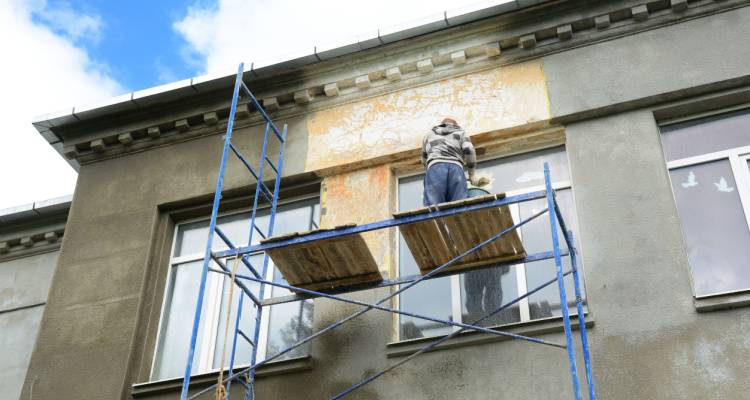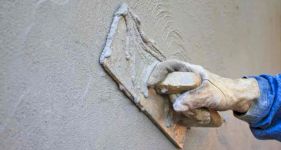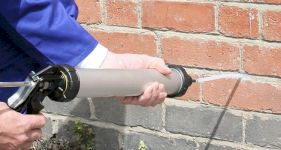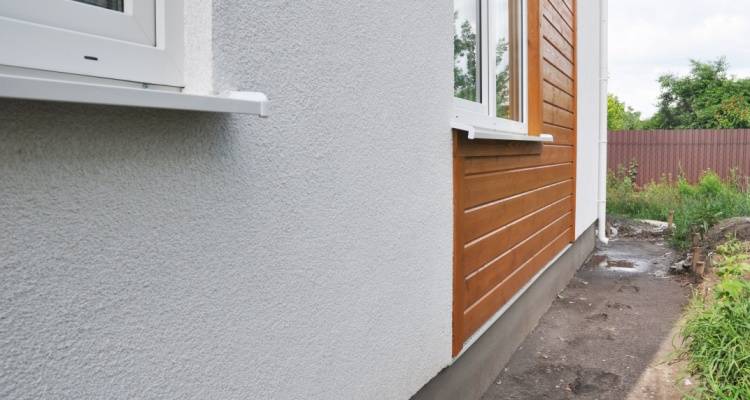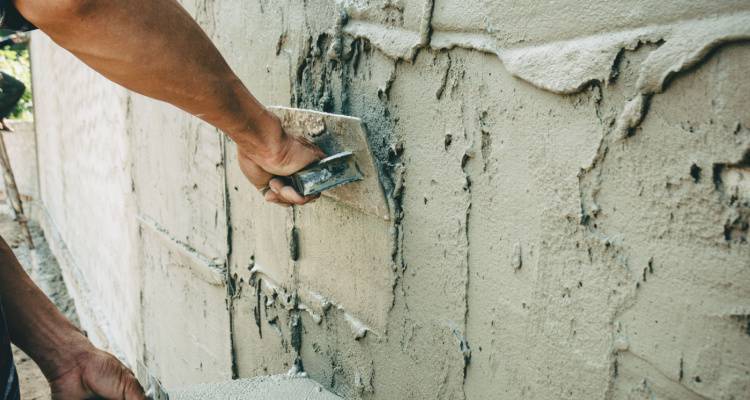Cost of Removing Pebbledash
- Pebbledash removal costs in the UK range from £2,100 to £7,800
- The average cost of removing pebbledash is £4,950
- An overview of pebbledash rendering and its popularity
- Costs associated with removing pebbledash
- Additional considerations for your pebbledash removal project
Pebbledash rendering is an exterior wall coating commonly seen on late 19th and early 20th century properties in the UK that combines a mortar or cement mixture with an aggregate - commonly pebbles or gravel - to create a rough texture. It rose in popularity as a cheap and effective type of house rendering during building booms, providing properties with weather resistance and enhanced external durability.
The popularity has waned somewhat in modern times, leading to many homeowners seeking out routes of pebbledash removal. Although the coating provides practical protection, it doesn’t always carry the aesthetic appeal favoured by contemporary housebuyers - what’s more, if the pebbledash rendering is deteriorating, there may be bigger structural problems lurking underneath that require attention.
In this article, we’ll be exploring the cost of removing pebbledash, as well as tips and tricks on how to find reliable, professional contractors to carry out the work.
We can also get your quotes from pebbledash removers in your area.
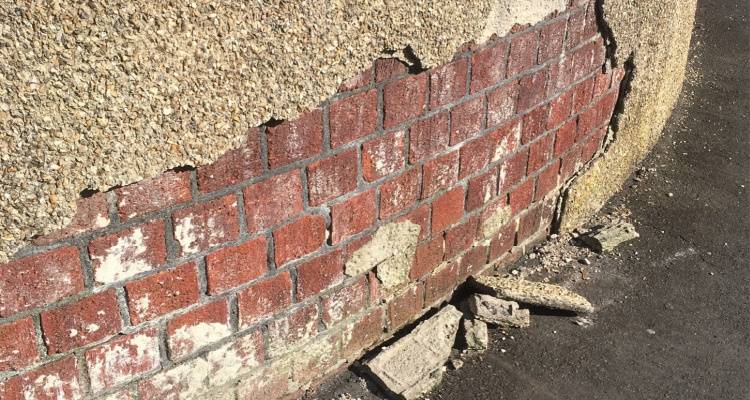
£4,500
Table of Contents
- How Much is Pebbledash Removal?
- Additional Costs
- Labour Costs and Timescales
- Cost Factors for Removing Pebbledash
- Building Regulations Related to Removing Pebbledash
- Types of Exterior Finishes After Pebbledash Removal
- Alternative Methods to Removing Pebbledash
- Hiring Contractors Checklist for Removing Pebbledash
- FAQs
- Sources
How Much is Pebbledash Removal?
To remove pebbledash in the UK, you’ll be looking at costs of between £2,100 to £7,800 depending on the size of your property and the condition of your pebbledash rendering.
While the average cost of removing pebbledash is £4,950, your price will differ depending on the exact type of service you choose. The most common process will include both pebbledash render removal, and then an application of a flat render to seal the surface once the initial removal is complete.
Pebbledash Removal Prices
| Property Type | Service | Estimated Cost | Time Required |
|---|---|---|---|
| 2-bed bungalow (100m2) | Pebbledash removal, re-render | £2,100 to £3,000 | 4 to 6 days |
| 2-bed terrace (150m2) | Pebbledash removal, re-render and repoint bricks | £2,000 to £4,500 | 1 week |
| 3-bed semi-detached (200m2) | Pebbledash removal, re-render | £3,800 to £5,200 | 5 to 8 days |
| 4-bed semi-detached (250m2) | Pebbledash removal, re-render | £6,300 to £7,800 | 1 to 2 weeks |
| 4-bed detached (300m2) | Pebbledash removal, re-render and repoint bricks | £6,000 to £10,000 | 1 to 2 weeks |
Additional Costs
The trend with home renovation projects is that the prices tend to rise - and keep rising - as the project wears on. Let’s take a look at some additional costs you may need to factor into your budget.
Scaffolding
On average, scaffolding will cost between £750 to £900 to go around a semi-detached house for painting or plastering access, with the cost rising to £900 to £1,150 for a detached property. This is for a 1-week hire period, and prices can fluctuate based on your location and the time period of your hire.
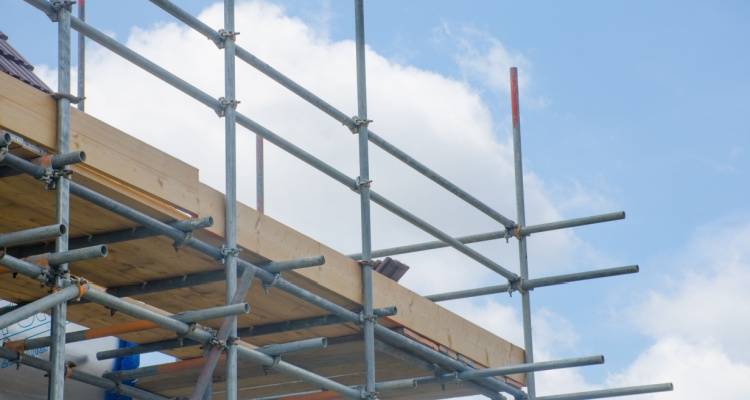
Waste Disposal and Skip Hire
There will be a lot of waste from a pebbledash render removal project, necessitating the need for a skip. Mini skips are around £90, while the largest skips can command fees of around £800.
Large skips are most suited to pebbledash removal, and a 20-yard skip will cost between £300 and £600, with a 40-yard costing between £400 and £800.
Costs in London are expected to be between £50 to £350 higher than in other locations, such as the North of the UK, due to increased demand. You will need to ensure that your skip is suitable for the type of waste you will be producing, as incorrect labelling can lead to fines.
Permits
You’ll need to check with your local council to see if you need a permit for your skip hire if you plan to have it stored on the roadside, which can range from £10 to £70 depending on your location. You can face fines of £1,000 if you don’t get a permit before having your skip delivered if you’re storing it on the roadside.
Labour Costs and Timescales
Labour costs for render specialists range between £130 to £250 per day, depending on the skill of the labourer. For the removal of pebbledash, you’re likely to see an increased rate of between £150 to £400 per day as it’s a labour-intensive job.
Removing pebbledash is a highly specialised job, and incorrect removal can lead to damage to your substrate which can make your costs rise exponentially, so it’s best to opt for a well-trained trader instead of a cheaper, less-experienced one.
The timescale can span from a few hours for small areas to days, if not weeks, for larger projects. This will be quoted on an individual basis, considering whether your property has pebbledash to all exterior walls or just the front facade; if it spans from the ground to the roof line, and the overall condition of the pebbledash.
Cost Factors for Removing Pebbledash
If you want to remove pebbledash, it’s important to consider the factors that can negatively and positively affect your project’s cost so that you are well-armed with facts when it comes to collecting quotes.
Location
Starting with a non-negotiable - your property’s location. It’s common to see higher charges in cities when compared to smaller towns due to the increased demand.
If your home doesn’t have a driveway or off-road parking, and you need to purchase parking permits, this is another cost to factor into your budget. Similarly, if your skip needs to be on the roadside, you will need to buy a permit for this, too - these range from £10 to £70, and you can face fines of £1,000 if you don’t get one before having your skip delivered.
Condition of Existing Pebbledash
Although you are removing it, the condition your pebbledash render is in will play a part in the price you pay for its removal. This is because additional safety measures may need to be considered if there is substantial damage to the existing render, making sections more likely to fall off.
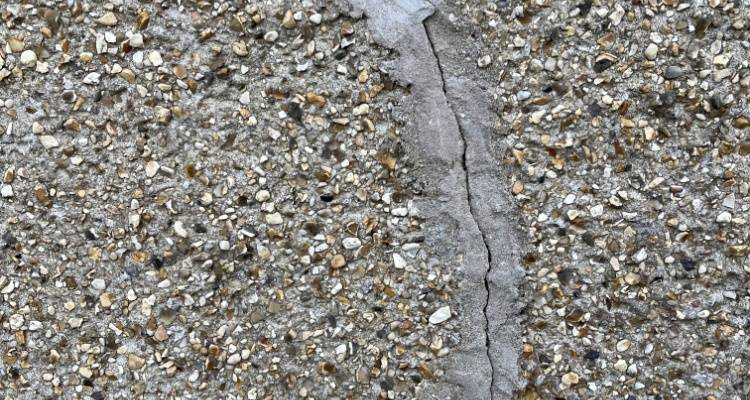
Another consideration is if the pebbledash rendering damages - or has already caused damage to - your substrate. This needs to be repaired before any new rendering or wall coating is applied, and will bump up your costs - and is another non-negotiable.
Complexity of Removal Process
You can either manually chip off pebbledash, or use a solution to cover it up and lay over the top to create a smooth surface for the new render. It is not something you can DIY as it requires a high level of skill so that you don’t damage your substrate.
Similarly, adding a solution to your pebbledash can seem like a good idea, but if your existing rendering isn’t structurally sound, you can run the risk of it pulling down the whole coating in a sheet, which is both a dangerous and time-consuming error to fix.
Additional Treatments or Repairs
If your brickwork has been badly damaged as a result of pebbledash removal, you will need to have it repaired before any further work can happen. Repairs run in the region of a few hundred pounds, but for more substantial problems, you can easily reach into the thousands.
Ease of Access
If your property overhangs a public pavement or road, or is particularly tall, your prices are likely to increase as the ease of access is reduced. Additional scaffolding hire and the potential for temporary closure of public rights of way can impact your costs, making the job even more expensive.
These costs can vary depending on your county, so it’s best to check with your local council for your rates.
Building Regulations Related to Removing Pebbledash
While the removal of pebbledash render may be for purely cosmetic reasons, there are structural, fire safety and thermal considerations to bear in mind to ensure you’re adhering to building regulations.
You will need to ensure that your property’s insulation isn’t compromised by the removal of any existing pebbledash rendering. Your rendering specialist will need to consider both the U-value (thermal transmittance) and the reciprocal R-value (minimum thermal resistance) to understand if there is a need for additional insulation as a result of the external change.
In most cases, removing pebbledash render will be permitted, as long as the structural integrity of your home’s outer facade is maintained - but there are, of course, exceptions to the rule.
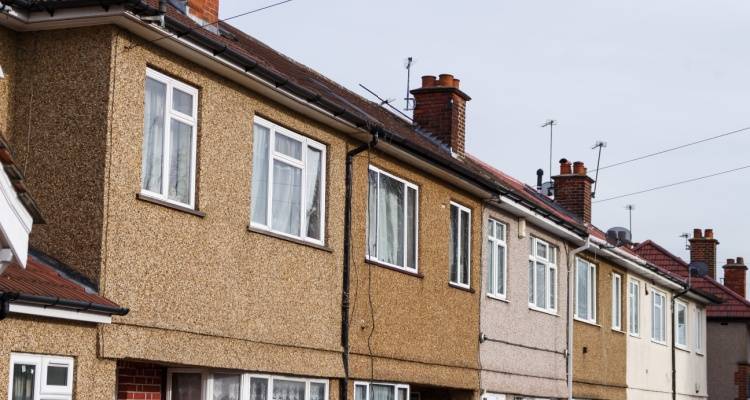
If your home is classed as a listed building or is located in a conservation area, you will encounter roadblocks to your pebbledash render removal. In these cases, the exterior of your property is likely to be subject to strict guidelines that will prevent you from changing the appearance of the house to conserve its original state.
For those not in conservation areas or with restrictive covenants, the guidelines will ease - but it’s important to bear in mind that if your pebbledash render removal uncovers structural damage to your substrate, repairing this will be subject to building regulations as it concerns the structural elements of your property. If this is the case, you may need a structural survey from your local council before you are given the go-ahead to remove the pebbledash rendering.
In terms of planning permission, The Federation of Master Builders states that planning permission is largely not necessary for the application or removal of external render as most alterations will fall under permitted development. But, as before, for those in conservation areas or dwelling in listed buildings, there will be restrictions.
It’s best to check in with your local planning authority or conservation officer before you start any project concerning the exterior of your property to ensure you are adhering to the guidelines, and not compromising your home’s thermal efficiency or structural integrity.
Types of Exterior Finishes After Pebbledash Removal
Once you have removed your pebbledash render from your home’s exterior, you will need to tidy up the outer appearance - and potentially add back in any insulation that has been lost as a result of the change. Let’s take a look at some of your options.
Structural Assurance
The first factor - and potentially the most important - is to ensure your home’s structural integrity hasn’t been compromised during the removal process. You will want to check that your contractor is assessing the brickwork for any damage, and taking steps to fix anything if that is the case.
As we have already mentioned, building regulations monitor the thermal efficiency of a house, and the removal of pebbledash will negatively impact the thermal rating and will need to be balanced back out. Only once your contractor is satisfied with the structural elements can you move on to the application of new render or other protective coatings.
Re-Rendering
The removal of pebbledash is usually to get a fresh, smooth external wall - and if this is the case, you will want to choose a new render type with these characteristics. Polymer renders are good choices in these situations, being malleable and flexible to allow for less cracking during temperature changes.
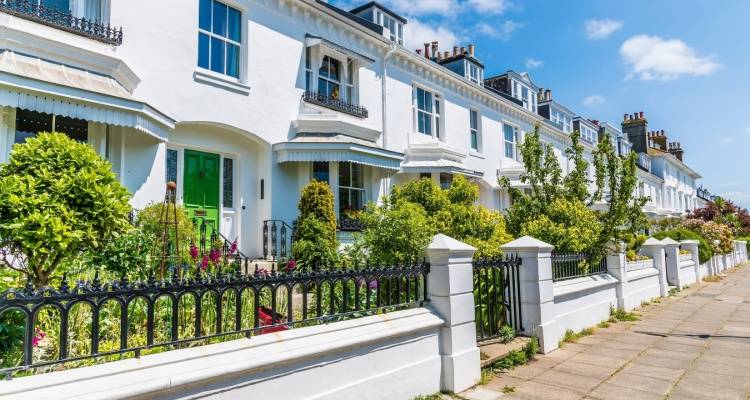
These renders are more expensive than traditional cement or sand renders but can yield better results and are likely to need fewer repairs over the coating’s lifespan. You can, of course, opt for a traditional render but you should be aware that your maintenance and upkeep will be more intensive than with polymer renders.
Cladding
Similar to rendering, you can opt to install cladding as another form of external protection for your home. Cladding comes in many different forms - timber, UPVC, aluminium - each with its benefits and drawbacks, and its popularity is growing in the UK after being incredibly popular in the US.
Cladding adds weather resistance to your home’s exterior and can modernise properties, adding a high-end finish. You can benefit from improved insulation and in some cases fire resistance, but each material should be weighed up individually to understand their pros and cons and suitability.
In general, cladding can cost anywhere from £2,800 to £6,000, with prices varying based on property size, material choice, and scaffolding hire duration.
Painting
Another option is to consider painting your house with masonry paint. You will need to ensure you have a flat, uniform base on which to paint - so if your bricks have been damaged in the pebbledash removal process, your labourer will need to rectify this before moving on to paint as any defects in the surface will become more apparent once paint is added.
Prices for masonry paint vary, but you can find 5-litre tubs for around £15, giving you a cost range of between £10 to £25 per m2 - which equates to £800 to £2,000 for supply costs only for a two-bed semi-detached house. You will then need to add on equipment costs, such as scaffolding, as well as factoring in your labourer’s day rate.
Alternative Methods to Removing Pebbledash
By now, we are aware that pebbledash removal is a time-consuming process, causing a lot of mess, and potentially substantial structural issues if your brickwork is impacted during the removal process. Thankfully, there are alternative methods to removing pebbledash if you don’t want to commit to a complete removal - let’s take a look at them.
Repair Existing Pebbledash
Before opting for removal, you can try to repair your existing pebbledash if the issues are small enough to fix in this way. There are drawbacks to this, however, and they mostly concern matching the repair to the original render, which can be hard.
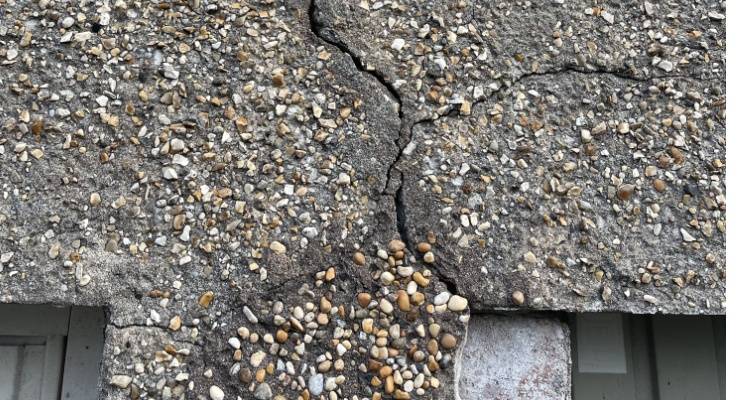
This may result in an uneven finish with obvious ‘fixes’ being visible. If this doesn’t bother you, and you just want to ensure the efficacy of your pebbledash rendering, then this could be a viable option for you - but be aware that it may not be the most aesthetically pleasing solution.
Patch repairs for pebbledash usually cost in the region of £300 per 5m2, and £600 for 10m2. Prices will increase relative to the equipment needed - such as scaffolding hire - and should only be seen as a temporary repair, and will require further upkeep.
Render Over Existing Pebbledash
If your pebbledash rendering isn’t badly damaged, you have the option of rendering over the top of it to create a new, fresh external coating. If you have any surface issues, these will need to be repaired first before the new render is added, which can increase your project costs.
This solution will still be less labour-intensive than complete removal and can give satisfying results if you simply want a clean canvas. This can cost anywhere from £3,000 to £6,000, depending on the size of your home and the height, and duration of equipment hire such as scaffolding and skips.
Here are different types of render you can choose from:
Cladding Over Existing Pebbledash
Another option is to install cladding over your pebbledash render - this will cost around £3,800, and take between two to three days, which is a far quicker option when compared to pebbledash removal. Depending on your cladding material - timber, UPVC, aluminium - you will encounter different costs, with timber being the cheapest and aluminium being the most expensive option.
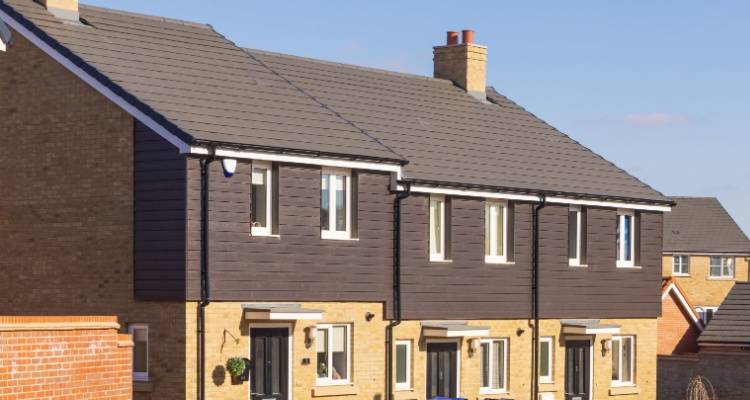
Painting Over Existing Pebbledash
Finally, if the surface is in good condition, you can simply opt to paint over your existing pebbledash render to give a clean appearance. While this won’t get rid of the pebbledash texture, it can brighten up a drab colour palette.
Your contractor must fill in any cracks or defects in the original pebbledash before applying a coat of paint as these defects will become more obvious once painted. Masonry paint will be used, and depending on the size of your home, your prices will vary - but you can get 5-litre tubs for around £15.
You will need to add on equipment costs, such as scaffolding, as well as factoring in your labourer’s day rate. This can be a great way of modernising pebbledash rendering without the need for removal and can turn out to be a much more cost-effective option if the structural integrity of the pebbledash is in good condition.
Hiring Contractors Checklist for Removing Pebbledash
Choosing the right contractor is of the utmost importance when starting any home renovation project - but for something like removing pebbledash, which has the potential to impact your home’s moisture barrier if removed incorrectly - it’s essential that you do your homework before picking the best-fit contractor for you.
Qualifications
The first step is to find a contractor with relevant qualifications and experience in pebbledash removal. While there is no set educational path to take, your contractor must have relevant certifications and licences in rendering fields, such as construction and hazardous materials handling which can help to demonstrate their professionalism in the industry.
Work History And Experience
Secondly, you should look at the contractor’s work history and review their past work. This can usually be found on their website, or independent review websites, and can help to give you an idea of their work ethic as well as their general ability to complete work to a high standard.
Work Ethic
While the actual practical ability of the contractor is important, their work ethic is of equal importance. If reviews repeatedly mention a lack of professionalism, tardiness, or poor health and safety working practices, you must take note of these as they could impact the result of your pebbledash render removal.
Gather Multiple Quotes
It’s a good idea to gather quotes from several contractors to compare their costs. While doing so, you will want to understand the scope of the project, concerning exactly what is and what isn’t included in the quote so that there are no hidden costs at the end of the project.
For example, if skip hire is necessary for the job, find out if this is something you need to arrange for - and if so, if the contractors will need a skip permit for the street, or if they will need a parking permit for the duration of their work.
These steps will help you to be clued up on your pebbledash removal project, and help lead you to the best contractor for the job.
FAQs
Is Pebbledash Hard to Remove?
Can You Render Over Pebbledash?
Can Pebbledash Rendering Be Repaired?
Which Climates Are Best Suited For Pebbledash Rendering?
Does Pebbledash Rendering Affect The Cost of My House?
Sources
https://www.fmb.org.uk/resource/house-render-what-you-need-to-know-before-you-start.html
https://www.neverpaintagain.co.uk/blog/what-to-do-with-pebbledash
https://emperorpaint.co.uk/pebbledash-render

